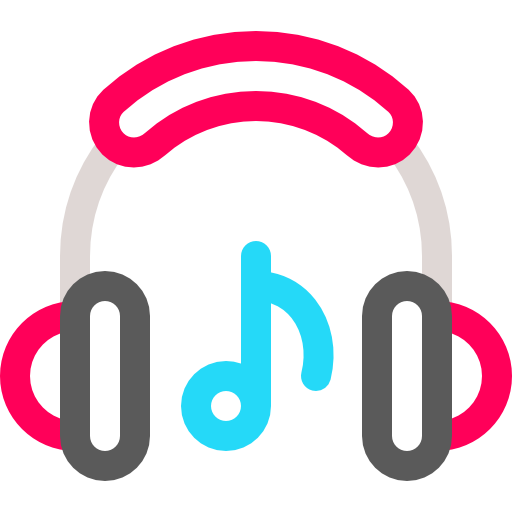Music has been an intrinsic part of human culture for millennia, evoking emotions, enhancing memories, and even promoting healing. However, only in recent decades has science begun to unravel the profound ways in which music interacts with the human brain.
Neurobiology — the study of the nervous system and brain — reveals that different musical genres stimulate the brain in unique ways, affecting cognitive function, emotional regulation, and even physical health.
This article explores how various types of music activate distinct neural pathways and why the genre you choose to listen to can significantly influence your mental and physical states.
The Brain’s Musical Pathways: An Overview
When you listen to music, it’s not a passive experience. Multiple brain regions light up in response, including:
- The auditory cortex, responsible for processing sound.
- The amygdala, involved in emotion.
- The hippocampus, associated with memory formation.
- The motor cortex, linked to movement.
- The prefrontal cortex, crucial for decision-making and focus.
Different elements of music — rhythm, melody, harmony, and lyrics — each activate specific brain circuits. The complex integration of these networks explains why music can evoke such powerful reactions, from chills down your spine to vivid memories or spontaneous dancing.
Classical Music: Boosting Focus and Memory
Classical compositions, particularly from composers like Mozart and Bach, are often linked with enhanced cognitive performance — a phenomenon popularly known as the “Mozart Effect.”
While the effect is sometimes overstated, studies have shown that listening to structured, harmonious classical music can enhance spatial-temporal reasoning, memory recall, and concentration.
Neurobiologically, classical music stimulates the prefrontal cortex and hippocampus, regions crucial for problem-solving and memory consolidation. The orderly patterns and predictable structures in classical music may help synchronize neural firing, promoting cognitive clarity.
Thus, classical music is often recommended for study sessions, complex problem-solving, and even during recovery from neurological injuries such as strokes.
Rock and Heavy Metal: Energizing the Brain
Despite its often chaotic and aggressive reputation, rock and heavy metal can have surprisingly positive effects on the brain, particularly in boosting emotional processing and energy levels.
High-tempo music activates the motor cortex and the cerebellum, encouraging physical movement and adrenaline release. Simultaneously, intense guitar riffs and dynamic drum patterns stimulate the limbic system, which processes emotional responses.
Interestingly, fans of heavy music often report feelings of calmness and emotional release after listening to intense tracks. Studies suggest that this genre may offer an outlet for stress, helping listeners regulate anger and frustration rather than escalating it.
Jazz and Improvisational Music: Enhancing Creativity
Jazz, with its emphasis on improvisation, has a unique effect on the brain’s creative centers.
When musicians improvise, studies using functional MRI (fMRI) scans show decreased activity in the dorsolateral prefrontal cortex (responsible for self-monitoring) and increased activity in the medial prefrontal cortex (associated with self-expression).
For listeners, exposure to jazz and other improvisational forms stimulates divergent thinking — the ability to generate multiple, novel ideas. The unpredictability and complex harmonies engage the brain’s default mode network, which is linked to daydreaming and creative problem-solving.
In short, jazz doesn’t just entertain; it nurtures innovation and mental flexibility.
Pop Music: Stimulating Pleasure and Memory
Pop music is engineered to be catchy — and neuroscience confirms that repetitive, familiar patterns activate the brain’s reward systems, including the release of dopamine in areas like the nucleus accumbens.
Dopamine is the neurotransmitter associated with pleasure, motivation, and reinforcement learning.
When you hear a favorite pop song, the brain not only experiences a “feel-good” effect but also forms strong associative memories tied to that music.
This explains why certain pop songs can instantly transport you back to specific moments in your life and why pop is often the genre of choice for workouts, parties, and motivational playlists.
Electronic Music: Synchronizing Brain Waves
Electronic and dance music, with their steady beats and repetitive structures, influence brain activity in fascinating ways.
Certain rhythms in electronic music can entrain brain waves — a phenomenon where the brain’s electrical activity synchronizes with the beat frequency.
For example:
- Alpha waves (8–12 Hz) are linked to relaxation and meditation.
- Beta waves (13–30 Hz) are associated with alertness and active concentration.
A fast-paced electronic track can increase beta wave production, promoting a heightened state of awareness ideal for high-energy activities. Slower ambient tracks, by contrast, encourage alpha wave dominance, ideal for relaxation and stress reduction.
Blues and Soul: Processing Emotions
Blues and soul music delve into complex emotional landscapes, often exploring themes of longing, resilience, and hope.
Listening to emotionally charged music activates the anterior cingulate cortex and the amygdala, brain regions involved in emotional processing and empathy.
Blues music’s capacity to articulate sorrow and hope simultaneously provides listeners with a sense of shared experience, offering emotional validation and catharsis. This emotional resonance has therapeutic benefits, aiding in mood regulation and even serving as a coping mechanism for anxiety and depression.
Practical Applications: Music as Medicine
Understanding how different genres affect the brain is not just an academic exercise; it has real-world applications.
Music therapy is now widely recognized as a tool for:
- Alleviating symptoms of Alzheimer’s and dementia.
- Supporting stroke recovery.
- Managing chronic pain.
- Reducing anxiety and depression.
Therapists often tailor musical selections to the patient’s needs, leveraging the brain-genre connection to maximize therapeutic outcomes.
Conclusion: A Symphony in the Brain
Music is not merely entertainment; it is a powerful force that interacts intricately with the human brain.
Each genre offers a unique neural experience — enhancing memory, regulating emotions, fostering creativity, or boosting physical energy.
Understanding the neurobiological effects of different musical styles not only deepens our appreciation for music but also opens pathways for using it strategically — whether for healing, motivation, learning, or simply enriching our daily lives.
Next time you put on a track, remember: you’re not just listening.
You’re orchestrating a complex, dynamic symphony inside your brain — one beat, one chord, one note at a time.

